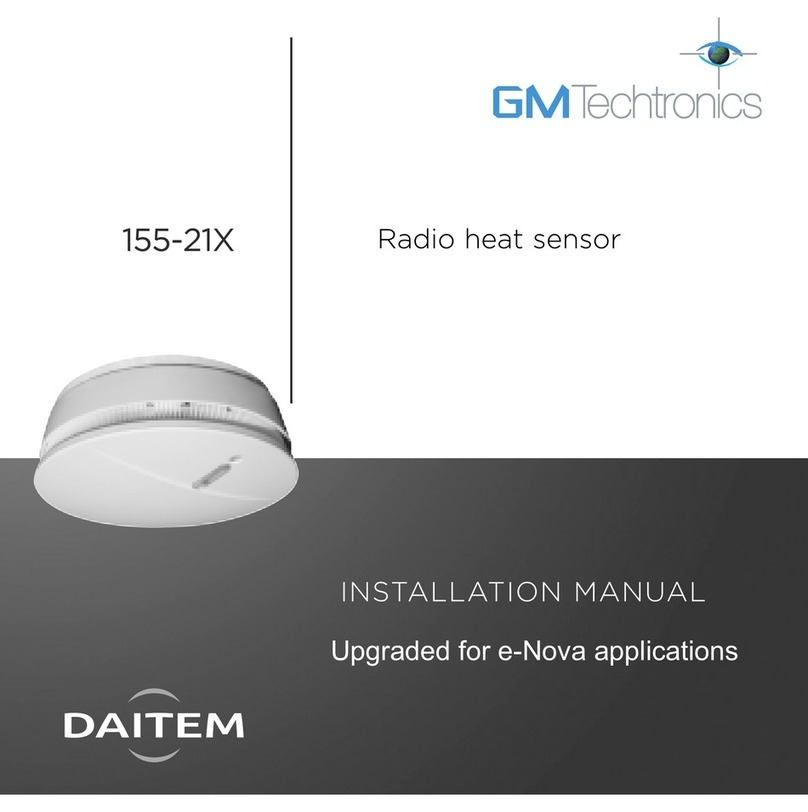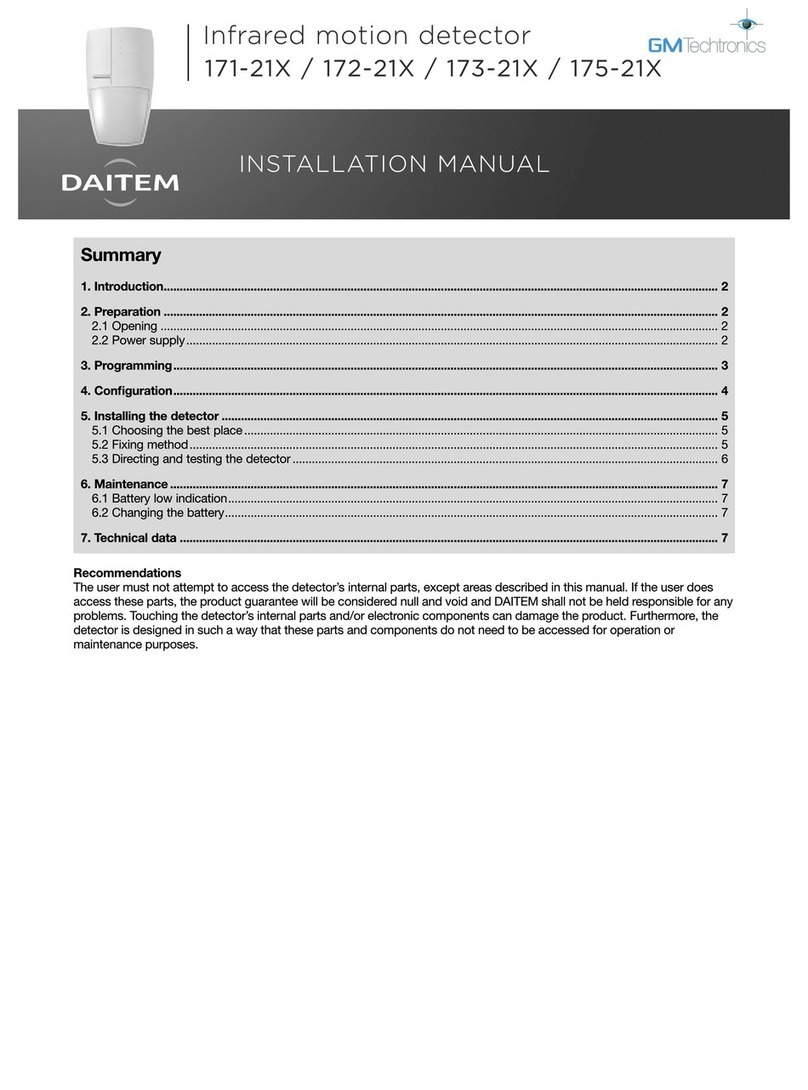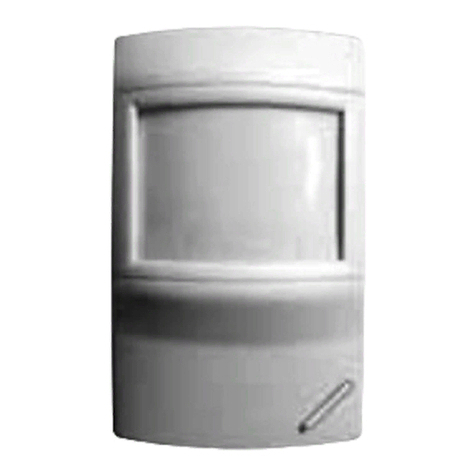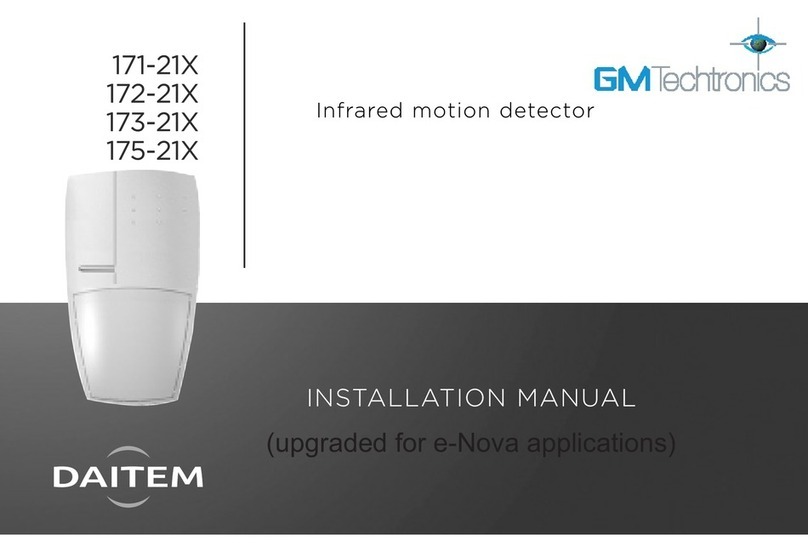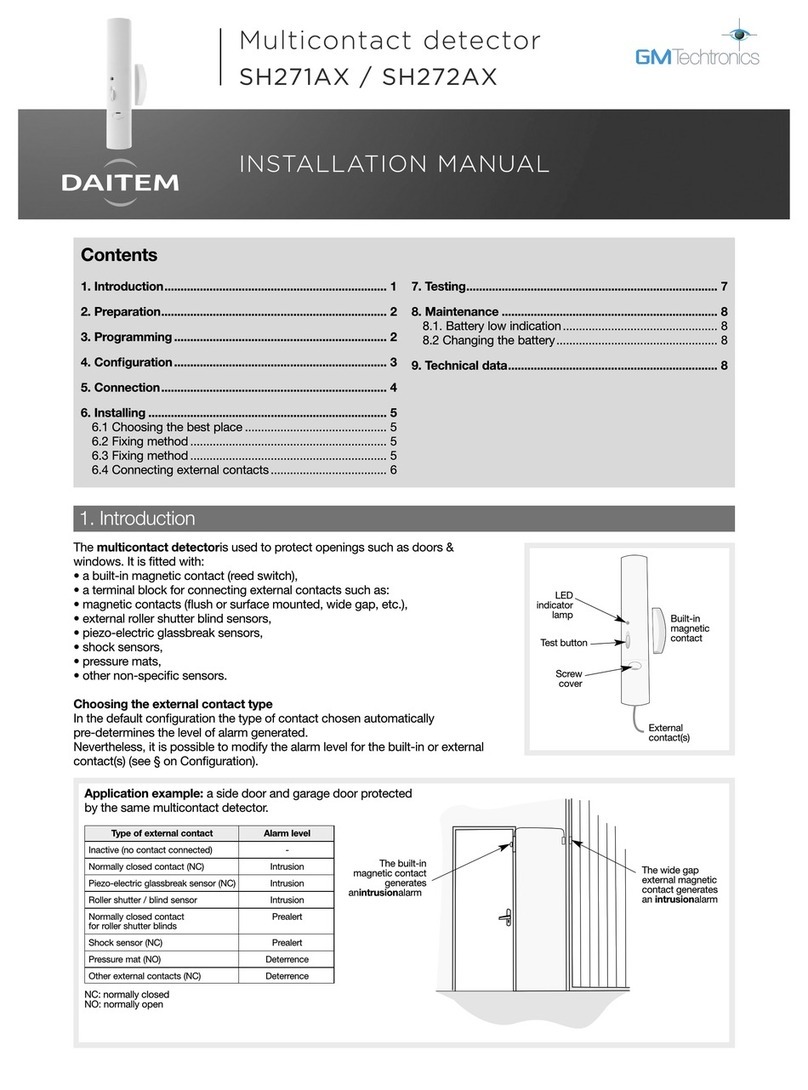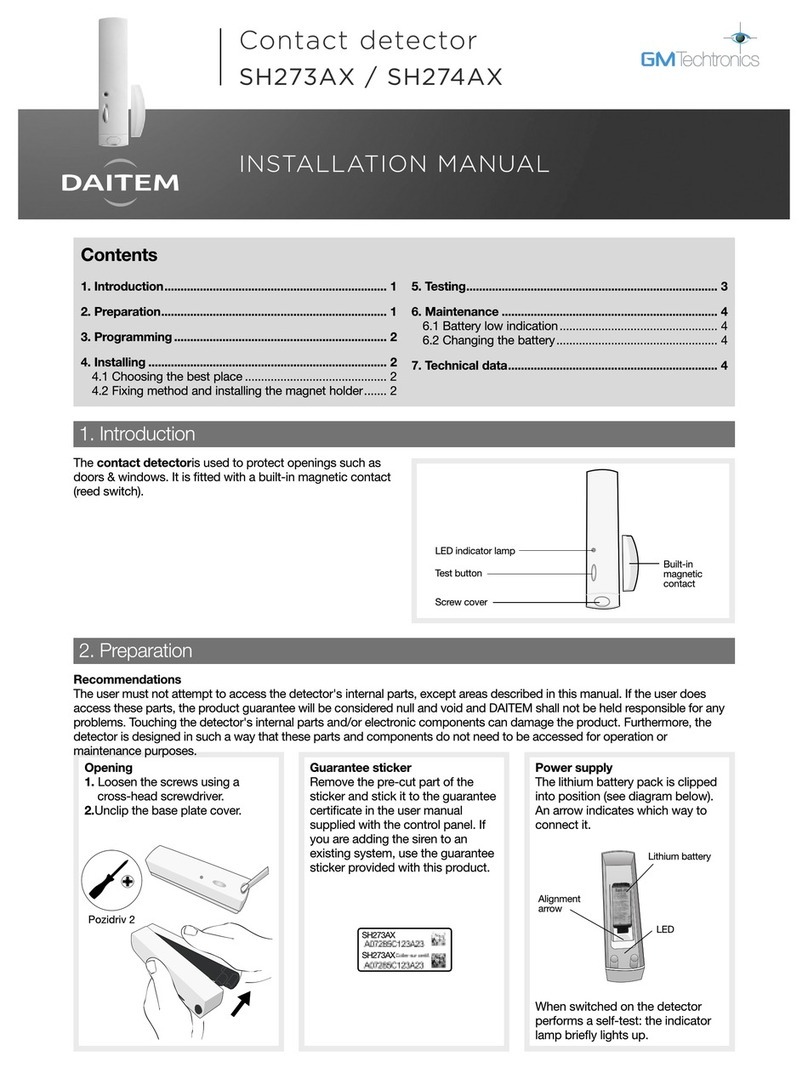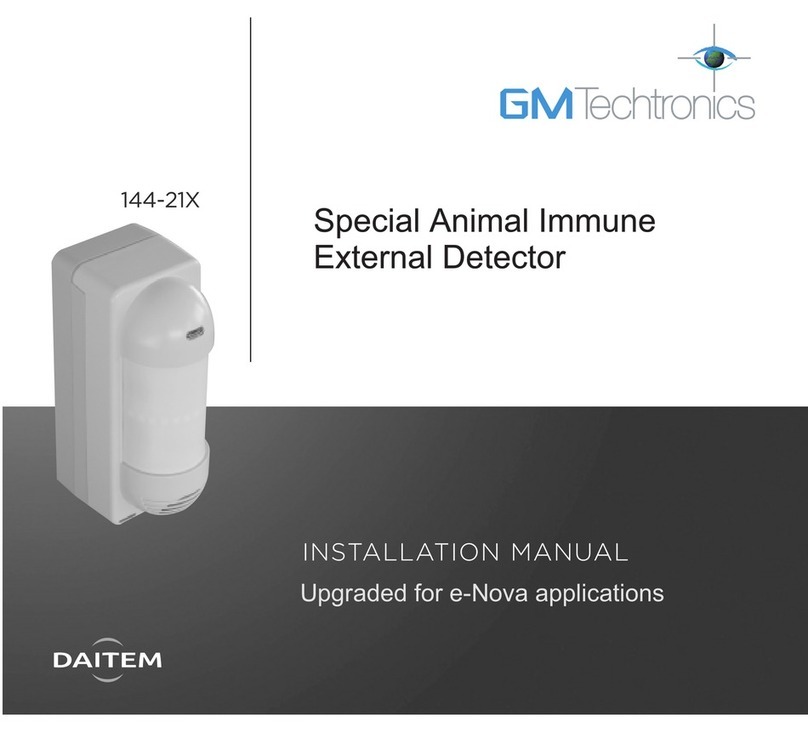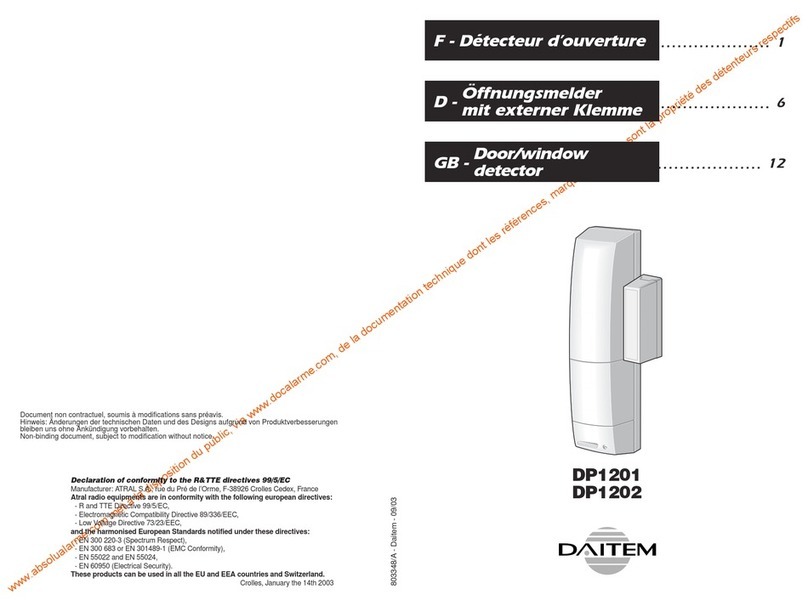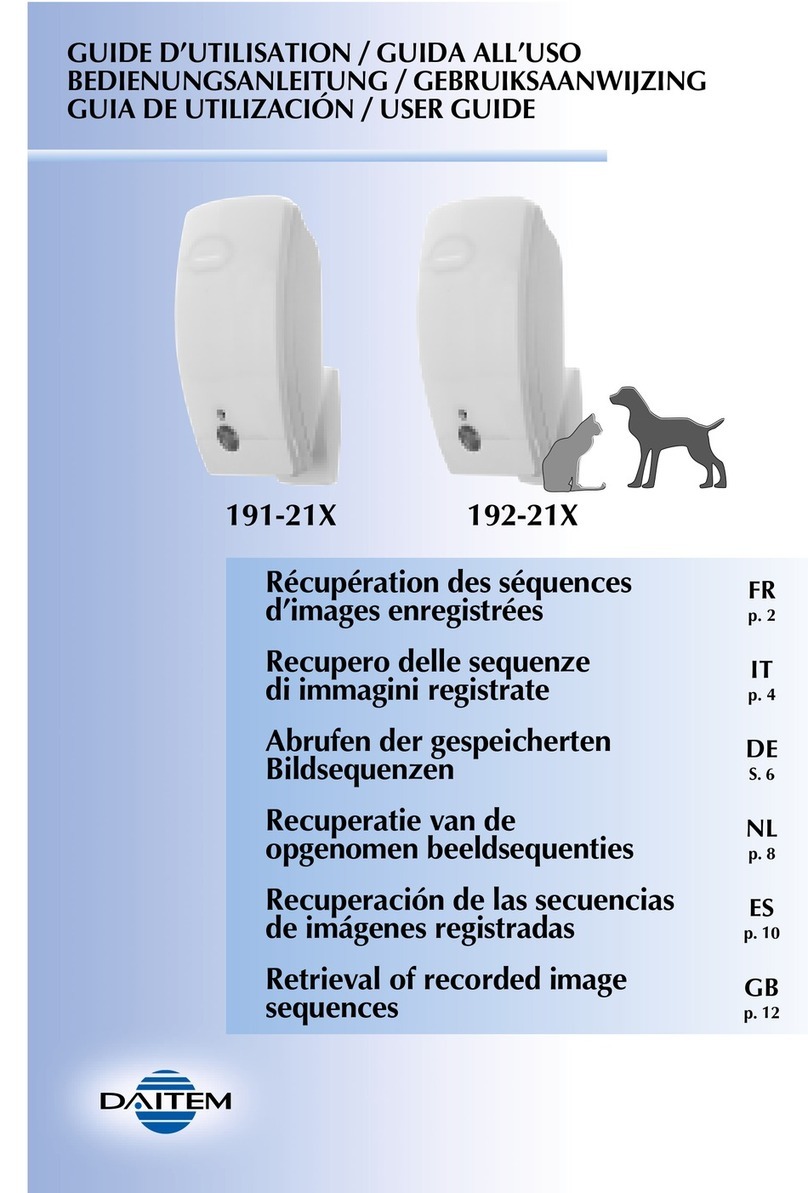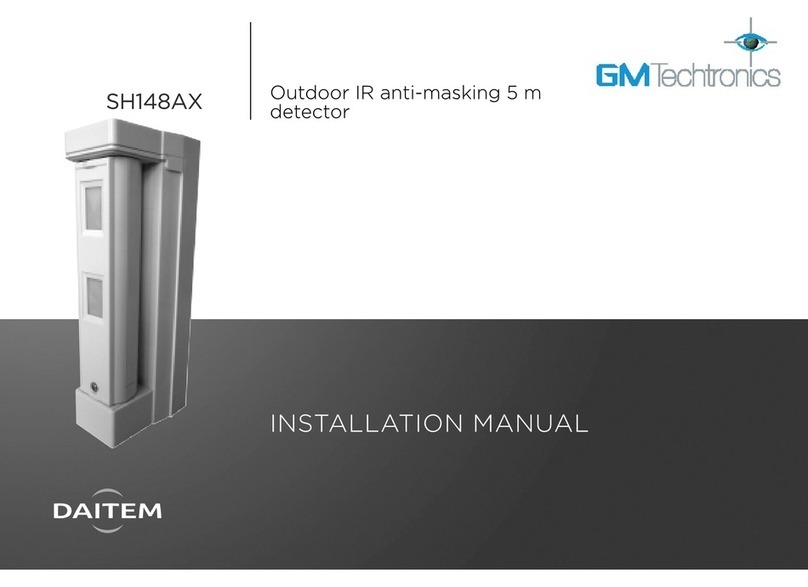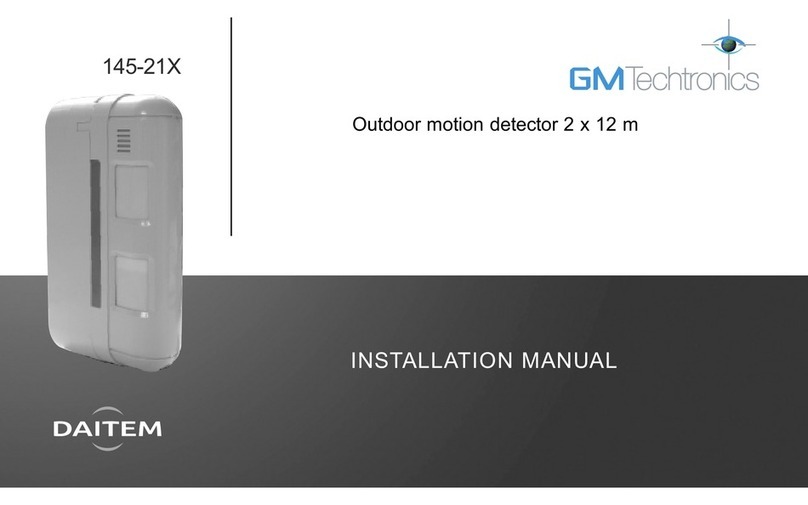GB
94
If intrusion occurs and the control panel is armed:
• the alarm system is triggered via the control panel,
• a sequence of 10-second images is recorded by the camera built into
the detector. Its built-in flash ensures visibility even in low lighting
conditions.
The microSD card stores the last 10 image sequences.
The recorded image sequences can be retrieved and viewed by
inserting the microSD card into a computer drive (Windows SP2
minimum required - not compatible with other operating systems such
as Mac OS X, Linux, etc.).
• and if the system is fitted with a GSM/GPRS and/or ADSL standalone
dialler (or a control panel fitted with a GSM/GPRS and/or ADSL
transmission module), the motion detector transmits the recorded
image sequence via TwinBand®radio to the dialler (or to the control
panel transmission module).
This image sequence is remotely sent by the standalone dialler (or by
the control panel fitted with a transmission module) for immediate
image/video confirmation of intrusion to:
- a remote monitoring centre,
- a mobile phone in MMS format.
On receipt of the sequence it is possible to visually check what has
really happened on the premises where the alarm was triggered as soon
as the information is received.
When the system is fitted with a standalone dialler powered by the
mains (or if the control panel is fitted with a transmission module
powered by the mains), you can ask to view an image sequence via
your computer or Smartphone (iPhone/Android) when there is no
intrusion.
This feature can be accessed by the system user once the installer has
created a customer account via the secure Internet Portal dedicated to
Daitem system use when this becomes available (accessed via
http://www.daitem.co.uk.
When this request is received via the Portal, the detector’s response is
similar to when an intrusion occurs, i.e. it records an image sequence on
the microSD card and transmits this but without any alarm information.
The sequences of images recorded or transmitted are date and time-
stamped. The date and time are automatically updated by the control
panel (the control panel date and time must be correct).
